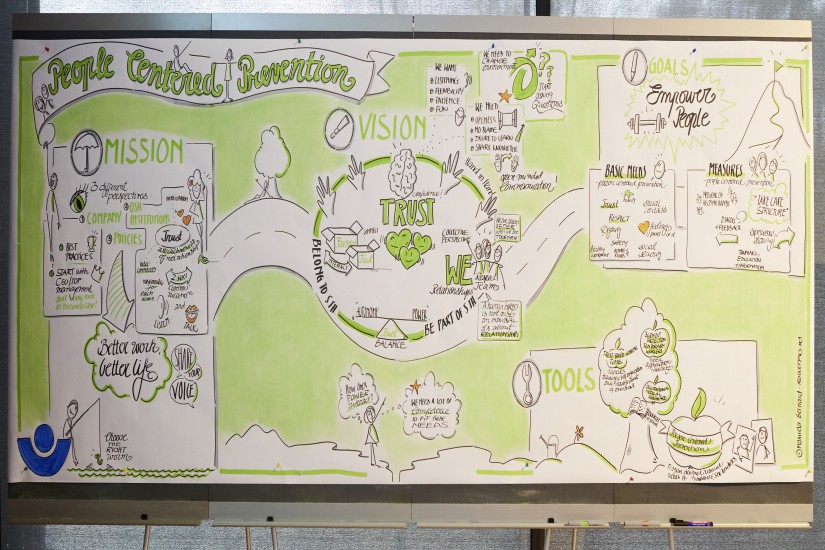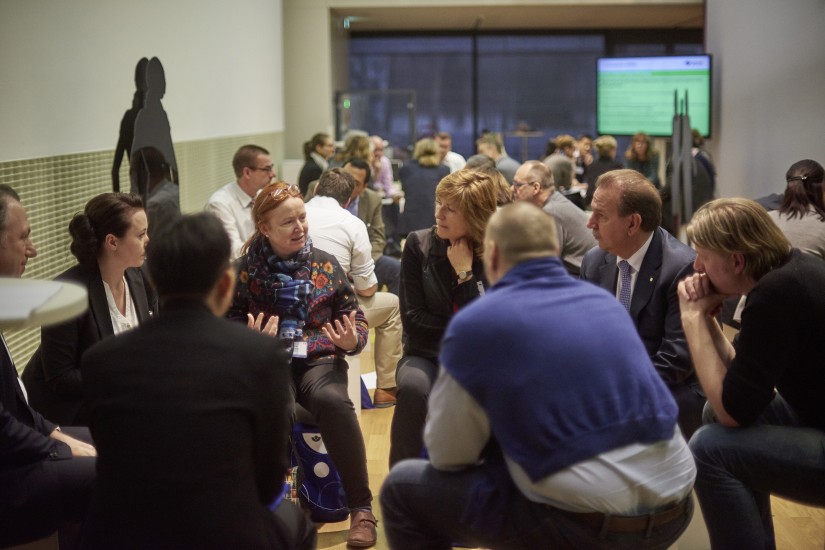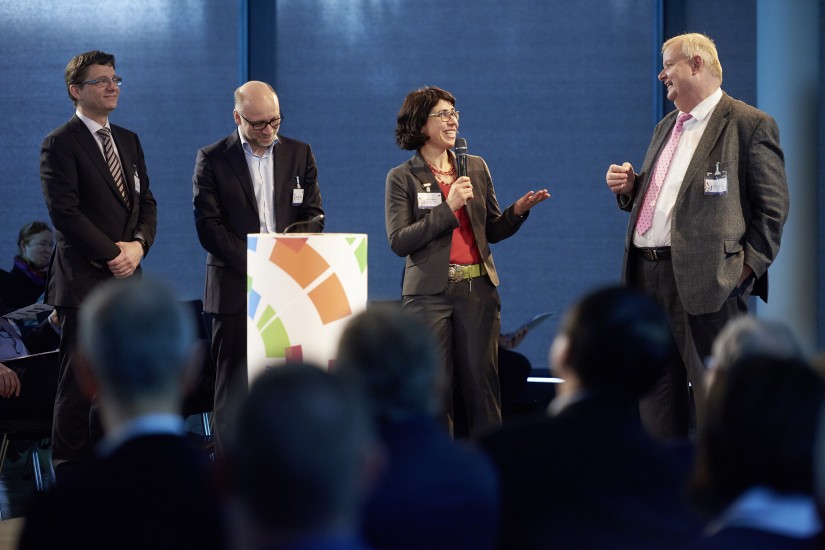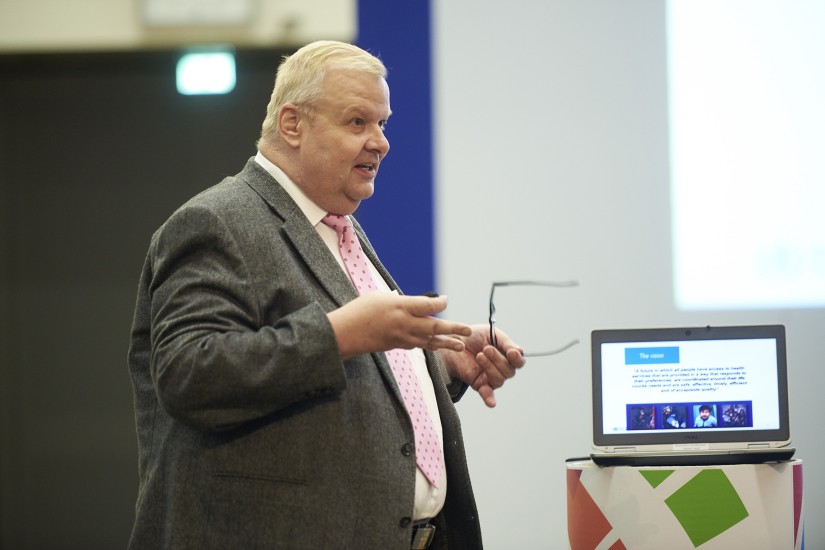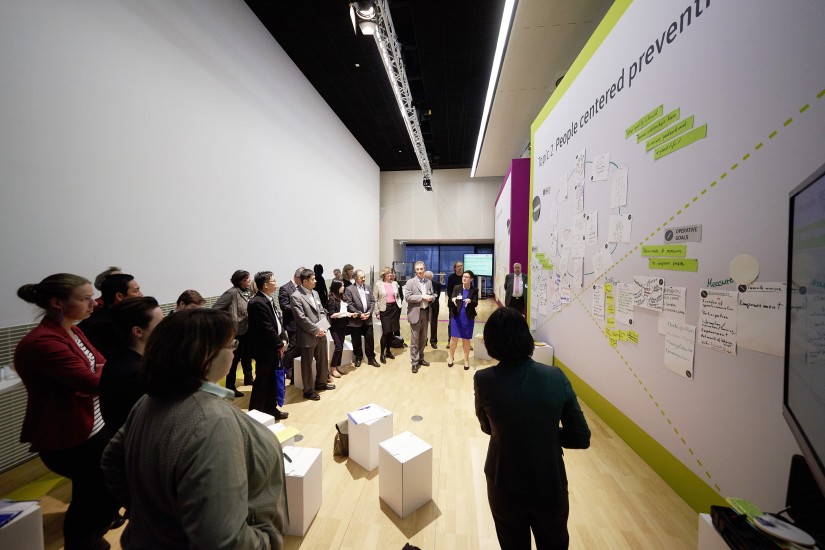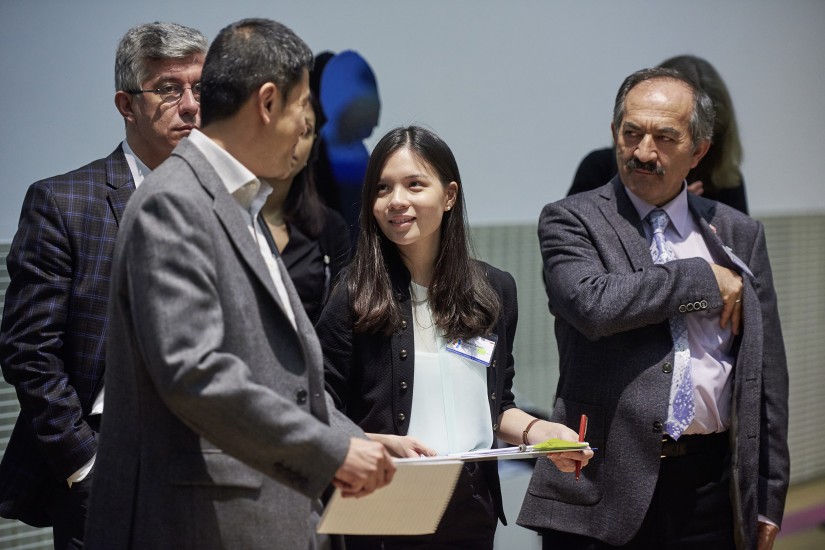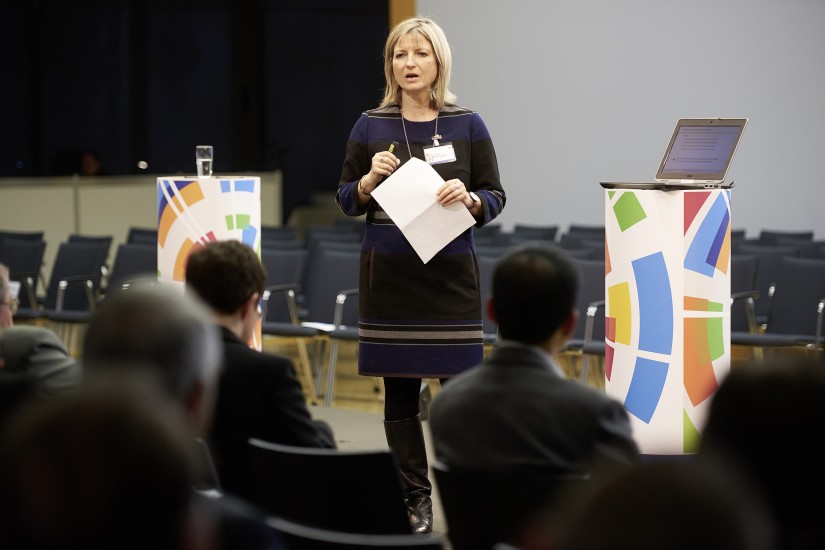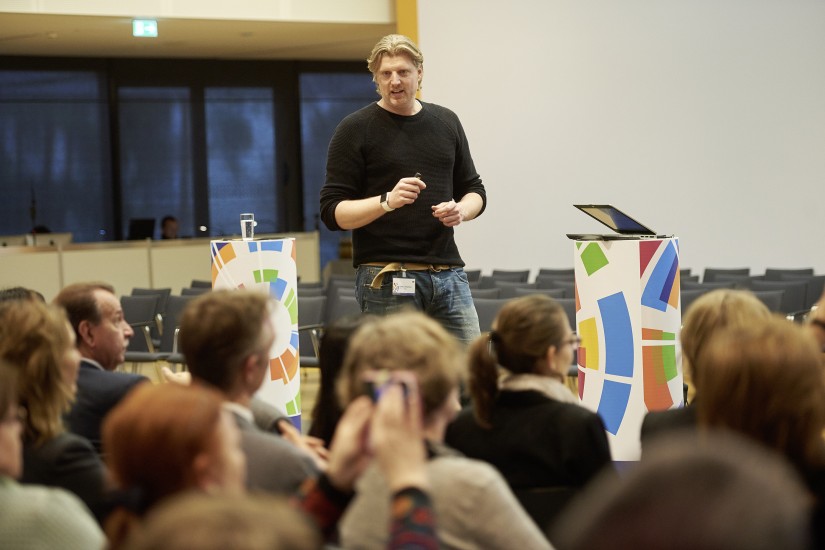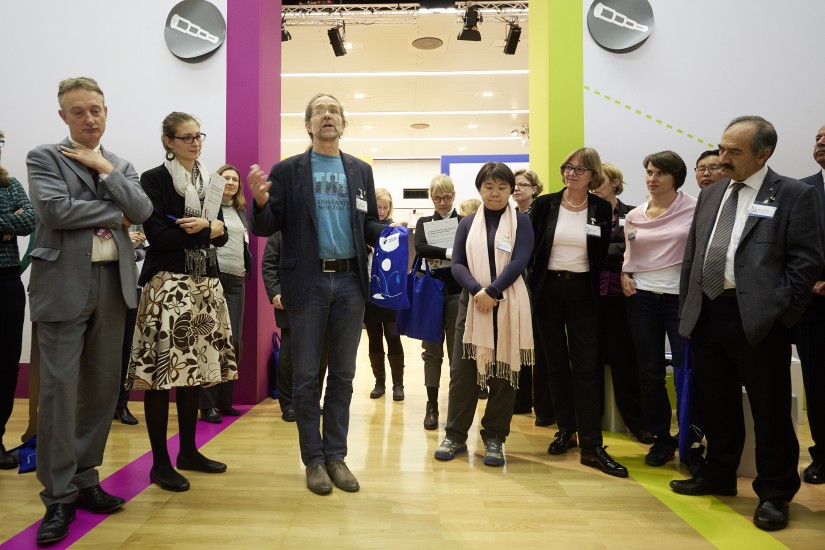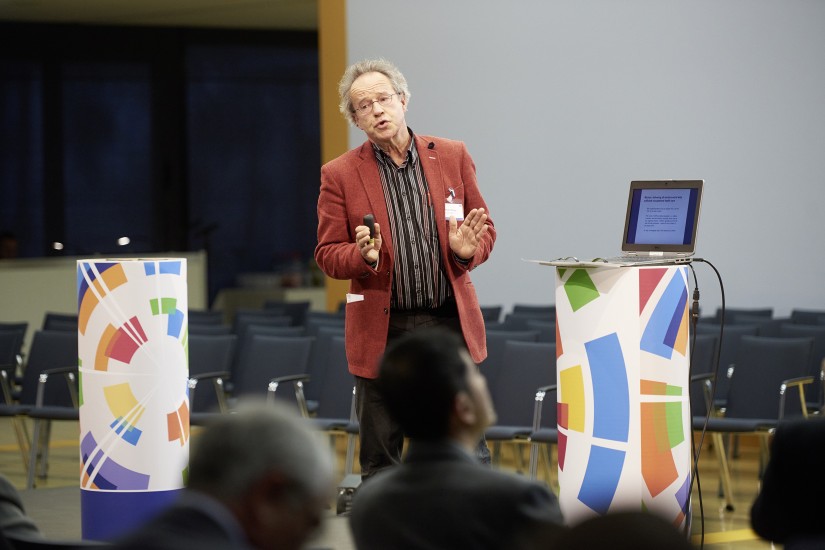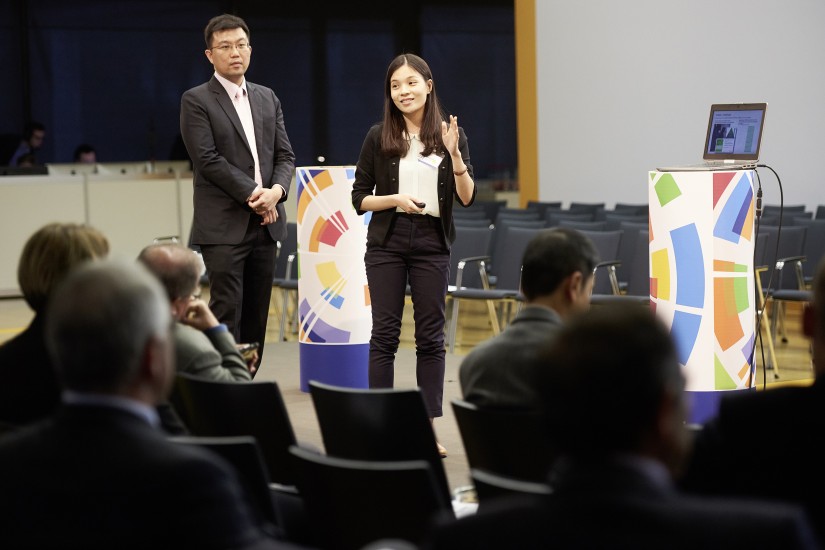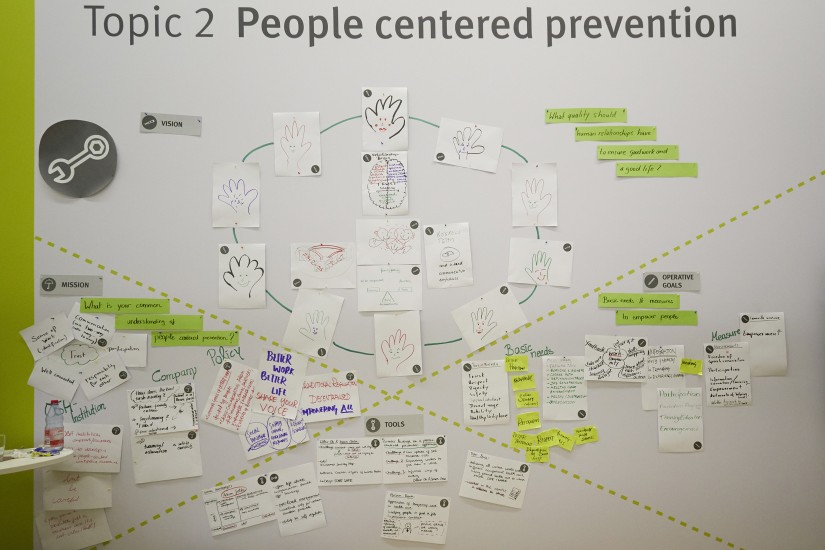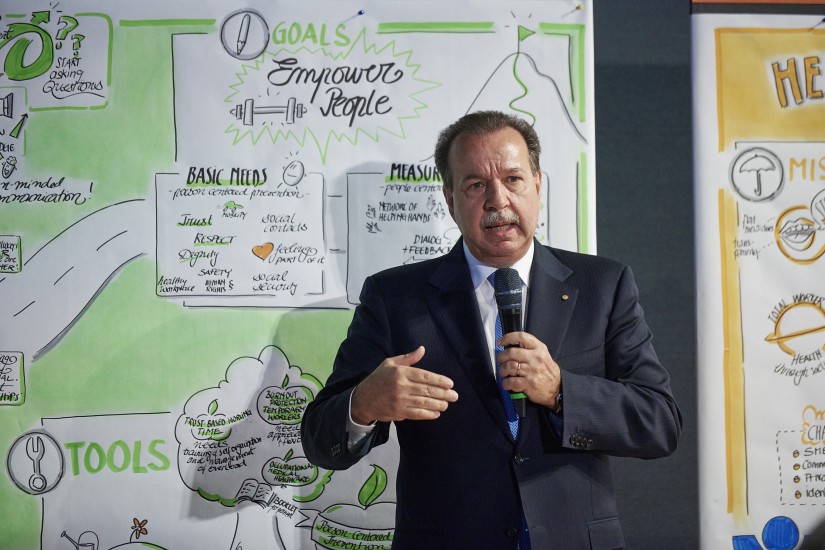T2 – People-centred prevention
“We need a humanised prevention concept which moves beyond the technical towards human-centred prevention”
In the second topic block of the 4th International Strategy Conference, participants dealt with the issue of how an acting, thinking and feeling person can become the even greater focus of prevention strategies. Practical experiences were shared by speakers from various companies including Natalie Lotzmann from SAP SE, Heiko Fischer from Resourceful Humans and Sonia Hornberger from AUDI AG.
A key question was: how do relationships between people need to be designed and structured so that everyone can work well and live well? Ivan Ivanov from WHO stressed that the fundamental requirement for this is access to decent working and living conditions. He introduced a new model of primary health care that addresses the needs of people over the course of their lives and which takes place where they live and work. This was also taken up by Natalie Lotzmann: “We have to look at the basic needs of people such as trust, participation, dignity, safety and respect in order to empower them”. Recurring themes in the numerous group discussions were the need for trust in the world of work and the need for a sense of belonging and being part of a whole.
One of several specific measures geared towards basic needs is a concept from the Singaporean Workplace Safety and Health Council (WSH). The StartSAFE directly targets the medium-sized business owner as a person, builds a relationship with this person, raises their awareness of hazards and enables him or her to find their own solutions to safety and health problems in their company. This also involves identifying the strengths and weaknesses of the owner and managers as well as establishing a culture of dialogue between management and employees.
In any event, it is important to find a good balance between the demands of work and the needs of employees. “Stressors such as long working hours, pressures or unrealistic goals have to be balanced out with resources such as fun-at-work, trust, team spirit or the freedom to make decisions”, summed up Natalie Lotzmann. At the end of the conference, ISSA Secretary General Hans-Horst Konkolewsky stated it was clear that “we need to revise our focus in prevention and look at people and their needs”. He called for the humanisation of prevention by designing it not only from the perspective of experts but also from the perspective of the people that are intended to be reached.
The approach of people-centred prevention can be succinctly expressed as follows: | |
| VISION | Build a world of trust |
| MISSION | Start with the CEO and the top management in your own organisation. |
| OPERATIVE GOALS | Treat employees with respect; provide them with good compensation, benefits and an excellent work-life balance; empower people and develop take-care-structures within your own organisation and beyond. |
| TOOLS | Tools are individualised and are no more “one size fits all”. For example:
|
